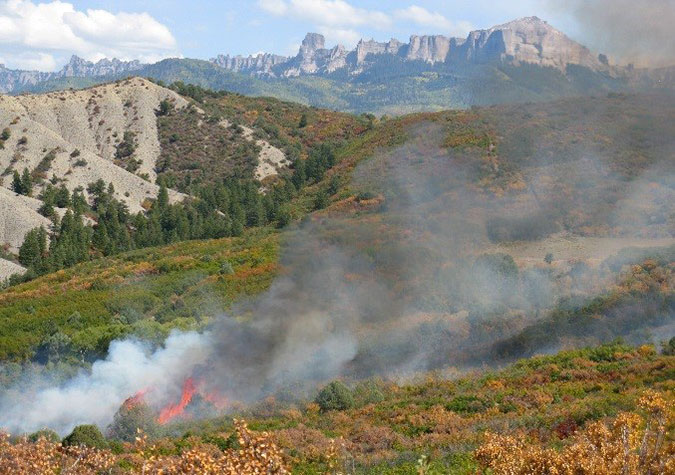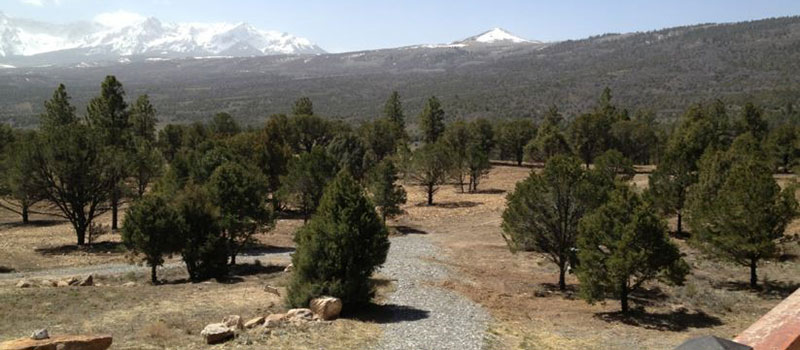Montrose Field Office – Wildfire Mitigation & Education
The Montrose Field Office works with federal, state and local agencies in Montrose, Ouray and San Miguel counties to help mitigate the hazards of wildfire to communities. We provide technical assistance and funding for wildfire mitigation around homes and in communities.
Protect your Home, Property & Forest
Due to Colorado’s arid climate and fire-dependent forests, many homeowners and landowners may be particularly vulnerable to wildfires. It is important to keep this in mind when buying, building and/or maintaining your home or property. Homeowners can take steps to protect their property and help alleviate the spread of wildland fires.
Two factors have emerged as the primary determinants of a home’s ability to survive a wildfire-quality of the defensible space around the home and the home’s structural ignitability. Together, these two factors create a concept called the Home Ignition Zone (HIZ), which includes the structure and the space immediately surrounding the structure. To protect a home from wildfire, the primary goal is to reduce or eliminate fuels and ignition sources within the HIZ.

Defensible Space
Defensible space is the area around a home or other structure that has been modified to reduce fire hazard.

In this area, natural and manmade fuels are treated, cleared or reduced to slow the spread of wildfire. The actual design and development of your defensible space depends on several factors.
- Size and shape of building(s)
- Construction materials
- Slope of the ground
- Surrounding topography
- Sizes and types of vegetation on your property
For more information on how to create wildfire-defensible space around your home, including the three defensible space zones, refer to the CSFS publication:
- Home Ignition Zone Guide (2.7 MB PDF)
Structural Ignitability
The ideal time to address home ignition risk is when the structure is in the design phase. However, you can still take steps to reduce ignitability to an existing home. For instance, it is important to choose a fire-resistant roofing material that is rated class C or higher when building a house in, or near forests or grasslands.
Avoid flammable materials such as wood or shake shingles. For more information on appropriate roofing materials and other fire-resistant building designs and materials, refer to the CSFS publication:
Fuelbreaks
Fire behavior can be modified by strategically placing landscape-scale fuelbreaks. A fuelbreak (or shaded fuelbreak) is a strip of land varying in width (depending on fuel and terrain), in which fuel density is reduced, thus improving fire control opportunities. For more information on fuelbreak guidelines, refer to the publication below:


 Partners in Action
Partners in Action
The Colorado State Forest and the West Region Wildfire Council (WRWC) work together in mitigating wildfire risk on the Western Slope. Their unique partnership offers a results-oriented collaboration by way of wildfire mitigation, outreach, education and technical assistance.
The West Region Wildfire Council promotes wildfire preparedness, prevention, mitigation and education throughout Delta, Gunnison, Hinsdale, Montrose, Ouray and San Miguel counties. Their mission is to mitigate loss due to wildfire in wildland urban interface communities while fostering interagency regional partnerships to help prepare counties, fire protection districts, communities and agencies to plan for and mitigate potential threats from wildfire. WRWC members represent private citizens, local, county, state and federal agencies with an interest in, and a commitment to address wildfire risk across the region.
More information about the West Region Wildfire Council


